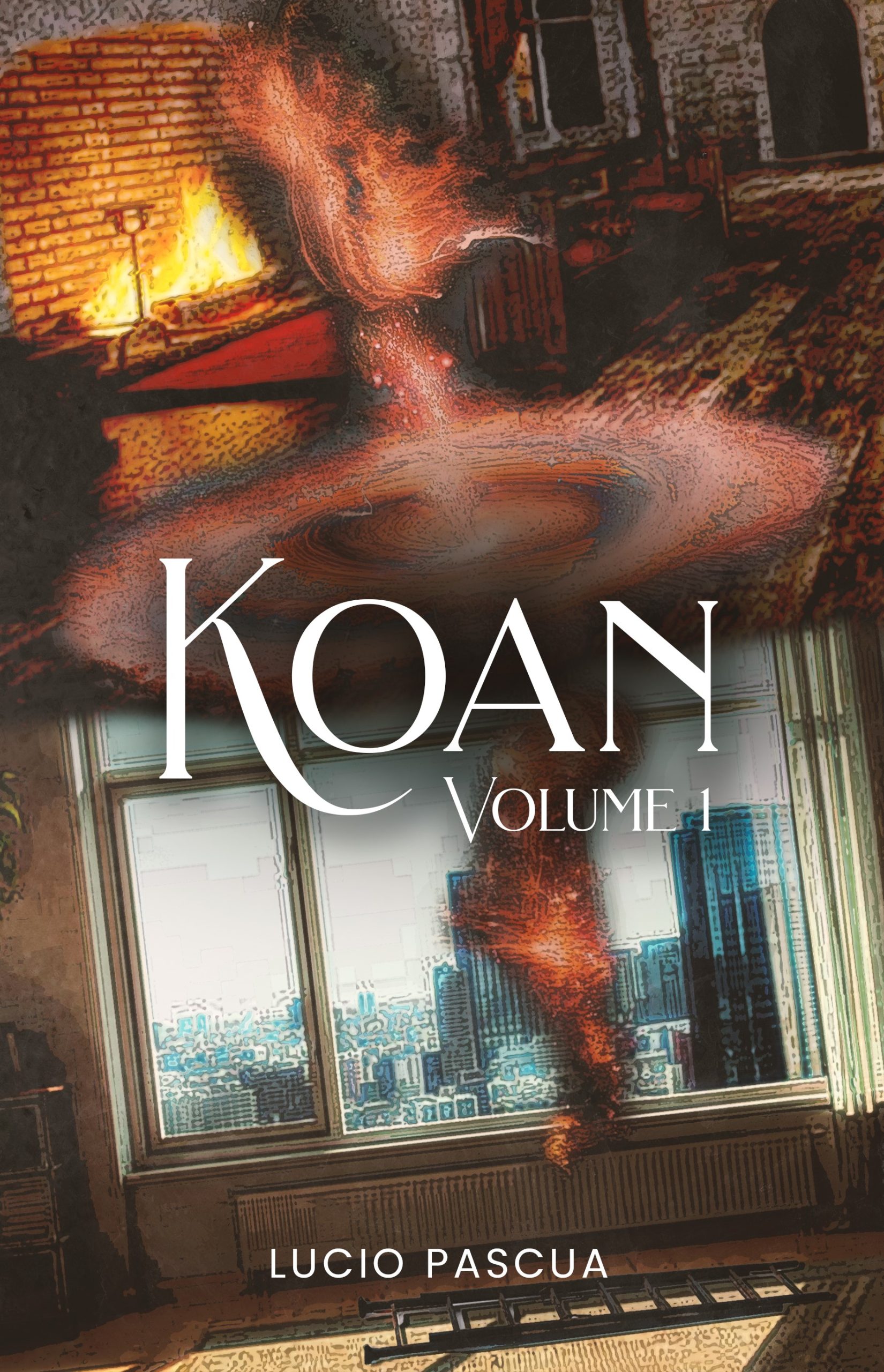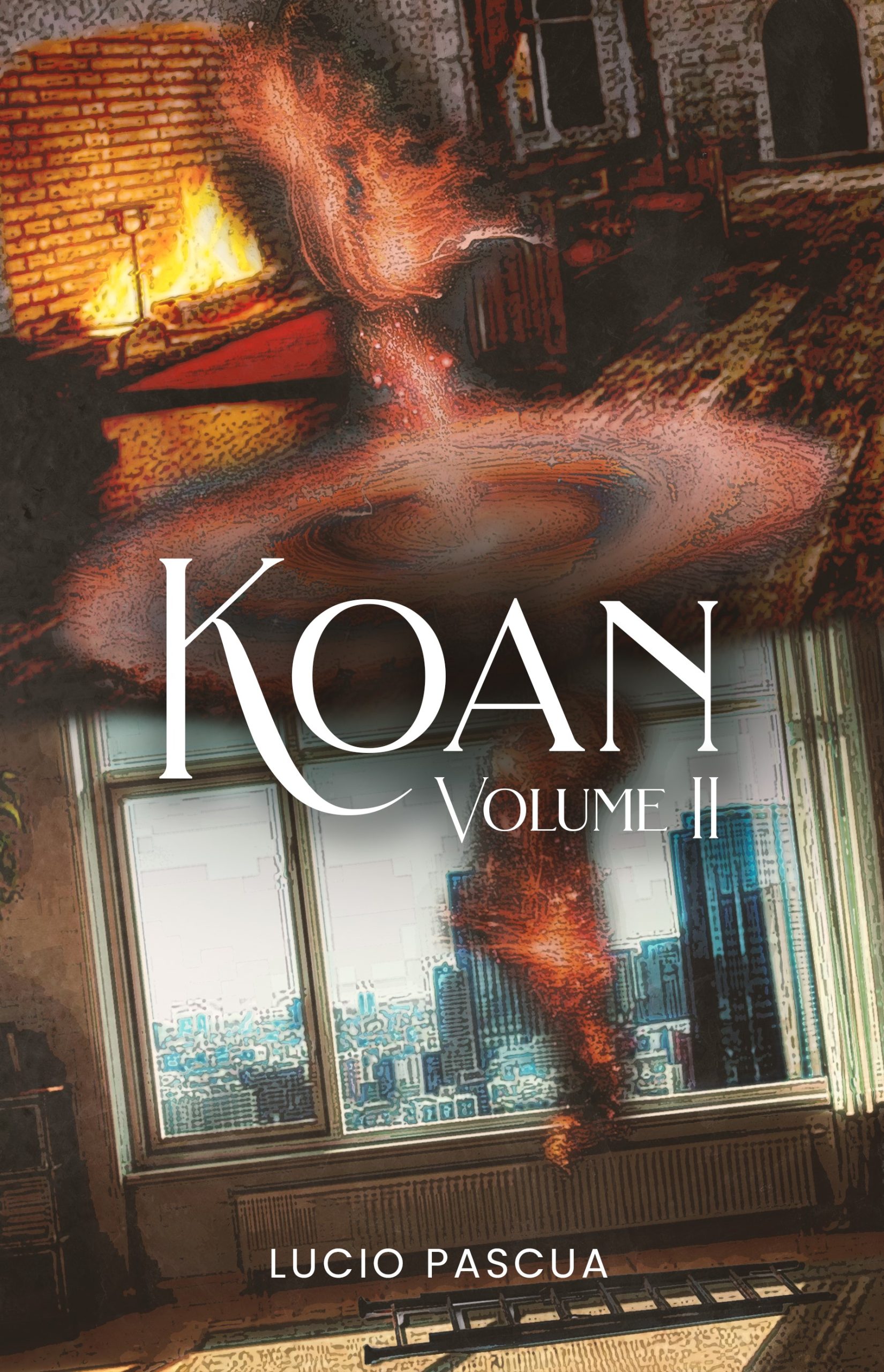There’s something deeply spiritual that happens when you read KOAN by Lucio Pascua. You don’t just flip pages—you enter a world where celestial beasts breathe through clouds, spirits rise from royal graves, and every sentence feels like a meditation on existence itself.
If you’re a lover of literary fiction mixed with magical realism, KOAN will likely haunt and enchant you in the best way possible. It doesn’t rely on a linear plot or character drama to hold your attention. Instead, Pascua takes you on a mythic journey through time, soul, and elemental power.

The story unfolds through a poetic reflection on how humans have tried to understand the universe, from imagining it locked in an unchanging shell to using it as a divining mirror for their own destinies. And then comes a breathtaking turn: a dragon, not of fantasy tropes but of ancient Asian cosmology, poised in divine attention amidst clouds and emerald water. It’s a spiritual entity, one of balance, power, and deep justice. It rules over wind, rain, treasure, and legacy, reminding us that the universe has forces that govern not through dominance but through grace and purpose.
But just when you’re mesmerized by the dragon’s majesty, Pascua introduces the Western White Tiger—the guardian of teachings, seer of the physical and metaphysical worlds. With metallic hues echoing the Fall season, the tiger becomes a totem of honor, war, remembrance, and protection. The image of a tiger forming from the essence of buried metals atop a king’s grave is pure literary alchemy. It resonates like a sacred truth: memory, virtue, and spiritual guardianship are never buried—they transform.
Reading KOAN feels like holding a sacred scroll. The writing is deliberate, rich, and steeped in cultural reverence. Pascua doesn’t merely retell mythology—he reanimates it. The dragon and tiger don’t just exist as metaphors—they breathe, walk, and shimmer within the folds of the world Pascua has built. It’s magical realism at its finest, where myth and meaning blend effortlessly.

What’s also stunning is the balance in tone. While the dragons and tigers command awe, they are never disconnected from humanity. In fact, they symbolise the very tension we live with daily—between control and surrender, destiny and choice, death and legacy. Their presence challenges readers to see the sacred in the mundane, to believe that even the smallest life is watched over by cosmic guardians.
In the end, KOAN isn’t just a book—it’s a spiritual experience disguised as fiction. It teaches without preaching. It conjures without overpowering. It asks the reader to reflect, to imagine, and above all, to feel.
So if your bookshelf craves something soulful, something elemental, and something wholly original, let KOAN take you there. Trust the dragon. Follow the tiger. And see what truths they reveal.